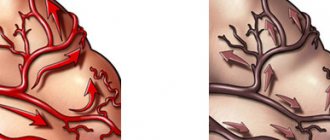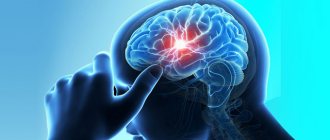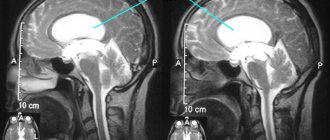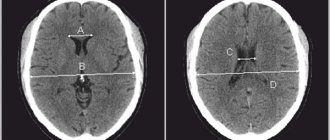Home — For the public
- Map of medical organizations
- Vaccination
- Clinical examination
- Fluorography
- Addresses and opening hours of clinics
- Emergency rooms
- Oncology
- Where to take an HIV test
- Healthy child's office
- Services
- Prevention of CVD
- Disease Prevention
- World Patient Safety Day
- Newspaper "Medical News"
- specialist
- School of Health
— Disease prevention
- HIV infection
- All about vaccination
- All about proper nutrition
- Hepatitis
- Flu
- Dementia
- Schoolchildren's health
- STD
- Tick-borne encephalitis
- Whooping cough
- Measles
- Legionellosis
- Meningococcal infection
- Oncology
- Acute intestinal infection
- Pediculosis
- First aid
- Pneumococcal infection
- Pneumonia
- Prevention of rabies
- Dependency Prevention
- Rotavirus infection
- Diabetes
- Cardiovascular diseases
- Injuries
- Tuberculosis
- Tularemia
- Physical activity
- Obstructive pulmonary disease
- Exotic infections
- Ecology
- Why is swimming in ponds dangerous?
— Cardiovascular diseases — Vascular diseases of the brain
Even at rest, the human brain consumes up to 25% of the oxygen entering the body; To ensure its operation, about 15% of the total volume of circulating blood is required. Vascular diseases, narrowing of their lumen leads to hypoxia and neuron death.
People without special education cannot always recognize the first symptoms of cerebrovascular accident and miss the time when therapeutic or preventive care is most effective.
Blood supply to the brain
Four large arteries are responsible for the transport of oxygen and nutrients to the brain tissues: two internal carotid and two vertebral. The vertebral arteries are responsible for supplying blood to the brain stem. At the base of the brain they merge into the basilar artery.
Each internal carotid artery is divided into anterior and posterior. These vessels supply the frontal, temporal, parietal, and occipital lobes.
At the base of the brain, the internal carotid branches, the basilar artery and the branches connecting them form a closed circle of Willis. It is named after the English doctor Thomas Willis. This anatomical formation ensures the redistribution of blood and the preservation of nutrition of parts of the brain during blockage of blood vessels. The outflow of blood from the cranial cavity occurs through the jugular veins.
Brain diseases occur when large and small vessels are damaged. Depending on the cause, symptoms occur acutely and require immediate medical attention or develop gradually, slowly leading to a deterioration in a person's quality of life.
The main causes of arterial damage include atherosclerosis and hypertension. In the first case, plaques form on the inner surface of the vascular wall, narrowing the lumen of the arteries. They have a thin cover and contain lipids inside. When such plaques rupture, blood platelets adhere to the damaged surface, leading to blockage of the lumen (thrombosis). The provoking factor is often vasospasm.
Arterial hypertension also damages the walls of blood vessels: they become denser, and areas of expansion (aneurysms) appear. These vulnerabilities can cause arteries to rupture or become blocked.
A condition in which small cerebral arteries are affected and the blood supply to the brain is affected is called discirculatory encephalopathy. Nerve cells do not receive enough oxygen and nutrients and die. A developed network of arteries cannot solve this problem. The process is not limited to any one area of the brain; lesions are found in various parts.
Treatment of cerebral vasospasm
Therapeutic techniques:
- Give up alcohol, tobacco and other bad habits.
- Stick to the established diet.
- Sanitation of infectious foci taking into account dental treatment.
- Elimination of spasms using calcium.
- Accelerated relief of painful symptoms through injections of Eufillin, Papazol.
- Use of nootropic drugs.
- Means that allow you to correct the functioning of the blood vessels of the head.
- Use of adaptogens.
- Physiotherapeutic procedures.
- You need to massage the collar area.
- Go to sanatoriums.
When treating cerebral vasospasms, it is necessary to follow the system established by the doctor; in order to achieve a sustainable result, you will have to take 2 or more courses.
Risk factors for cerebrovascular diseases
Assessing the likelihood of vascular damage, neurologists and cardiologists say that some people are more predisposed to this group of diseases. Risk factors include such conditions, diseases and lifestyle features as:
- low physical activity;
- hypertonic disease;
- heart disease;
- diabetes mellitus of any type;
- hypercholesterolemia;
- smoking;
- regular stress, psycho-emotional stress;
- frequent drinking of alcohol.
In addition, the risk group includes people with a family history of hypertension, heart attack, stroke in close relatives.
What is MAG ultrasound?
This diagnostic method is based on the study of blood vessels using ultrasound, and in the process the Doppler effect is applied to them. It, in turn, is based on the fact that stationary and moving objects reflect ultrasonic waves differently.
Ultrasound scanning for the study of MAG is performed using special sensors that generate ultrasound and direct them to the area under study. The procedure will provide data on:
- blood flow speed;
- direction of blood movement through the vessels;
- condition of blood vessels and their walls.
Symptoms
The first signs of vascular damage to the brain may appear already at a young, working age. In this case, patients tend to ignore painful symptoms and not consult a doctor. And even when visiting a therapist or neurologist, the condition often remains unrecognized.
Among the early signs:
- absentmindedness;
- memory loss;
- fatigue;
- decreased performance;
- headache;
- noise in the head;
- episodes of dizziness;
- weather sensitivity.
Signs of circulatory problems may appear one by one. Young patients often associate them with overwork, as they believe that it is too early for them to be sick.
Over time, negative lifestyle factors lead to a deterioration of the condition - normal activities begin to suffer, severe weather sensitivity worries, and a person’s character “deteriorates.”
But sometimes the situation changes dramatically. In such cases, they speak of acute cerebrovascular accidents. How to recognize typical vascular diseases?
Encephalopathy
This diagnosis has already become “the talk of the town”: it is used to scare patients with hypertension, and it is “gifted” to old women who make scandals in pharmacies, clinics and on the street. And no wonder. The first symptoms of the disease are often noticeable behavioral, emotional and volitional disturbances. Thus, patients experience:
- irritability;
- emotional lability;
- sleep disorders;
- fatigue;
- depressive symptoms.
Relatives may notice that such a relative has become angry, sensitive to changes in weather, and his personality traits have become “sharpened.” Sentimental people become whiny, punctual people become pedantic, thrifty people become frankly stingy.
Over time, productivity begins to suffer: memory and attention deteriorate. The person becomes absent-minded, “constantly writes down so as not to forget,” but still forgets. Episodes of inappropriate, rude behavior are possible.
Discirculatory encephalopathy progresses, the course can be uniform or with sudden episodes of deterioration. It cannot be cured, you can only slow down the development of the disease. Severe encephalopathy is characterized by the development of dementia. Such a patient has completely lost self-care skills, in some cases cannot control physiological functions, and needs constant care and supervision.
Osteochondrosis often provokes or intensifies the manifestations of encephalopathy, as it impairs blood flow to the brain due to narrowing of the lumen of the vertebral arteries. Slow personality changes due to vascular damage also occur in systemic diseases accompanied by vasculitis.
Stroke
Stroke is one of the most common causes of death in people around the world. In fact, this is an acute circulatory disorder in the cerebral vessels, in which the entire brain lesion dies. According to the mechanism of development, there are 2 types of strokes: ischemic and hemorrhagic.
In ischemic stroke, the lumen of the vessel is blocked. Brain cells are very sensitive to hypoxia. At first, they try to provide for themselves through anaerobic glycolysis; within a few hours, the pathological processes are reversible. But decay products gradually accumulate, and the pH of the tissue changes to the acidic side. Neurons swell, their membranes cease to perform their functions and are destroyed. The final formation of the stroke focus occurs within 2-7 days; specialist assistance is most effective during the first 3-6 hours.
With a hemorrhagic stroke, the integrity of the vessel is compromised. Blood pours under the membranes, into the parenchyma (tissue) of the brain, and breaks into the ventricles. The cause of such a catastrophe is changes in the structure of the vascular wall and fluctuations in blood pressure. Congenital or acquired cerebral aneurysm can cause sudden death or severe disability. Until it reaches a large size, there is no pressure on the brain, and there are no clinical manifestations. The condition may worsen acutely, the patient is concerned about:
- headache;
- nausea;
- double vision;
- convulsions;
- disturbances of consciousness.
A special place is occupied by transient ischemic attacks, or as they say - micro-strokes. The name “microstroke” is unscientific; it reflects the reversibility of what occurs in the patient’s tissues. Some people who have had ischemic attacks are not aware of this. Thus, patients are greatly surprised to learn about them when describing a routine computed tomography or magnetic resonance imaging. (“I thought it was a simple hypertensive crisis!”)
Symptoms and prognosis for cerebrovascular accidents depend on the volume and location of the lesion. It is worth recalling obvious signs, the detection of which requires immediate medical attention:
- severe headaches, often with dizziness, tinnitus;
- asymmetry of the face, it is impossible to raise your hands, smile, show your teeth;
- weakness, numbness in the arms and legs, unsteadiness of gait;
- violation of pronunciation and perception of addressed speech;
- nausea and vomiting;
- disturbance, loss of consciousness.
How to get rid of the problem?
To alleviate your condition, the patient needs to:
- Leave the patient alone, give him some motherwort.
- To eliminate headaches, you will have to use analgesics.
- If problems with the blood vessels in the brain continue, you will have to take a warm bath or give your feet a cold one.
- When the above methods do not stop the attack, you will have to consult a doctor for professional support.
- You need to wash your face with cold water.
- Lie down for a while and lay your head on the pillow.
- Massage the back of your head and temples.
- Drink some warm water and honey.
When problems with cerebral vessels appear systematically, it is necessary to determine the real cause that caused the disease. Once it is determined, it is easier to prescribe the correct treatment. The following methods are used: medications, surgery, traditional medicine.
You need to understand that treatment for spasms of blood vessels and other diseases are prescribed taking into account the individual characteristics of the patient.
The following are used in the form of safe medicinal methods for the treatment of mild disorders in domestic conditions: Amitripline, Anaprilin, Afabazole.
Problems with blood vessels imply a loss of elasticity. Therefore, medical procedures are carried out in 3 main directions : the use of drugs that strengthen the walls of blood vessels, thin the blood, surgery, and traditional medicine.
Medicines: drugs that improve lipid metabolism, sedatives, drugs that improve the dilation of blood vessels, drugs that eliminate spasms, anticoagulants, tranquilizers. Among the folk remedies we can mention herbal tinctures and medicinal tea. Gymnastics is one of the auxiliary measures suitable for treatment.
Diagnosis of vascular diseases of the brain
To “take care of your health and get examined,” you don’t need to wait until you reach pre-retirement or retirement age - many vascular disorders begin to develop in young people. What do we have to do? It is necessary to undergo regular preventive examinations, even if “nothing bothers you,” and do not be embarrassed to “bother” the doctor with complaints about a change in condition.
Diagnosis of cerebral vascular pathology includes:
- Analysis of patient complaints. You should tell your doctor even such “minor” symptoms as: fluctuations in blood pressure, headaches, dizziness, forgetfulness, and weather sensitivity.
- Anamnestic information: age, presence of risk factors, rate of development of symptoms, concomitant diseases (hypertension, diabetes, systemic and rheumatic lesions).
- Examination of the patient with analysis of neurological symptoms, examination of the fundus. Body mass index assessment.
- Laboratory data: blood sugar, blood lipid profile, coagulogram, platelet count assessment. CSF analysis to detect hemorrhagic stroke.
- Instrumental diagnostic methods: CT or MRI of the head, scanning of the vessels of the head and neck, ECG.
Prevention
Below are a few useful habits that will help significantly reduce the risk of developing atherosclerosis:
- to give up smoking;
- nutrition balanced in composition of nutrients;
- correction and maintenance of optimal body weight;
- annual preventive monitoring of lipid and blood sugar levels.
The diagnostic capabilities of our center allow us to establish a diagnosis quickly and accurately. Based on the results of the examination, you will be advised by experienced neurologists, whose knowledge has helped save hundreds of patients.
Also, individual health monitoring programs have been developed on the basis of the Federal Scientific and Clinical Center of the Federal Medical and Biological Agency of Russia.
- for men (under 40 years old, over 40 years old, standard);
- for women (under 40 years old, over 40 years old, standard based on age and optimal)
Don't put off taking care of your health. Call us or make an appointment to assess your risk of atherosclerosis and receive comprehensive recommendations.










